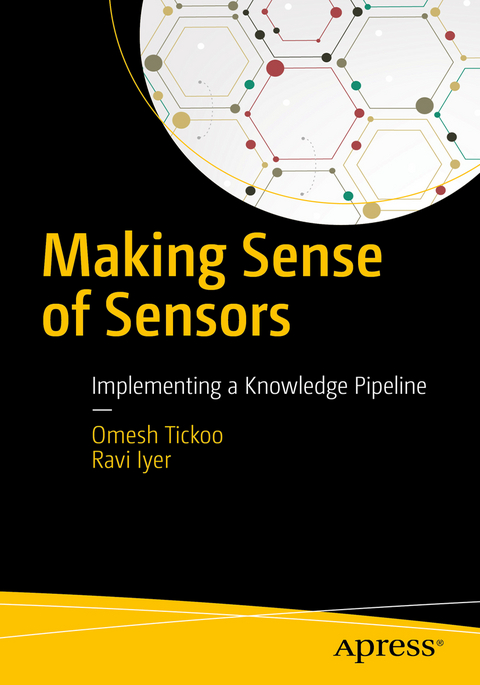
Making Sense of Sensors
Apress (Verlag)
978-1-4302-6592-4 (ISBN)
Making Sense of Sensors starts with an overview of the general pipeline to extract meaningful data from sensors. It then dives deeper into some commonly used sensors and algorithms designed for knowledge extraction. Practical examples and pointers to more information are used to outline the key aspects of Multimodal recognition. The book concludes with a discussion on relationship extraction, knowledge representation, and management.
In today’s world we are surrounded by sensors collecting various types of data about us and our environments. These sensors are the primary input devices for wearable computers, IoT, and other mobile devices. The information is presented in way that allows readers to associate theexamples with their daily lives for better understanding of the concepts.
What You'll Learn
Look at the general architecture for sensor based data
Understand how data from common domains such as inertial, visual and audio is processed
Master multi-modal recognition using multiple heterogeneous sensors
Transition from recognition to knowledge through relationship understanding between entities
Leverage different methods and tools for knowledge representation and management
Who This Book Is ForNew college graduates and professionals interested in acquiring knowledge and the skills to develop innovative solutions around today's sensor-rich devices.
Omesh Tickoo is a research manager at Intel Labs. His team is currently active in the area of knowledge extraction from multi-modal sensor data centered around vision and speech. In his research career Omesh has made contributions to computer systems evolution in areas like wireless networks, platform partitioning and QoS, SoC architecture, Virtualization and Machine Learning. Omesh is also very active in fostering academic research with contributions toward organizing conferences, academic project mentoring and joint industry-academic research projects. He has authored 30+ conference and journal papers and filed 15+ patent applications. Omesh received his PhD from Rensselaer Polytechnic Institute in 2015.
Chapter 1: Introducing the Pipeline.- Chapter 2: From Data to Recognition.- Chapter 3: Multimodal Recognition.- Chapter 4: Contextual Recognition.- Chapter 5: Representing Relationships.- Chapter 6: Relationships and Knowledge.- Chapter 7: Knowledge Representation.
| Erscheint lt. Verlag | 7.1.2017 |
|---|---|
| Zusatzinfo | 84 Illustrations, black and white; XIII, 117 p. 84 illus. |
| Verlagsort | Berlin |
| Sprache | englisch |
| Maße | 155 x 235 mm |
| Themenwelt | Mathematik / Informatik ► Informatik ► Theorie / Studium |
| Informatik ► Weitere Themen ► Hardware | |
| Schlagworte | wearable computing |
| ISBN-10 | 1-4302-6592-2 / 1430265922 |
| ISBN-13 | 978-1-4302-6592-4 / 9781430265924 |
| Zustand | Neuware |
| Haben Sie eine Frage zum Produkt? |
aus dem Bereich


